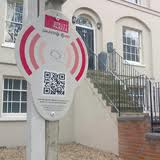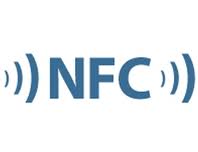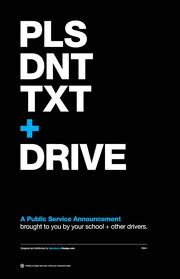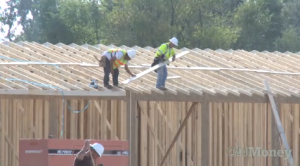 Are you ready to park your purse or wallet and search and pay for everything via smartphone? Near Field Communications (NFC) is a technology that has the functionality to change everything about how we spend, send and receive money and how we access our bank accounts. It’s global in scope and catching on fast.
Are you ready to park your purse or wallet and search and pay for everything via smartphone? Near Field Communications (NFC) is a technology that has the functionality to change everything about how we spend, send and receive money and how we access our bank accounts. It’s global in scope and catching on fast.
Real Estate Industry Implications
Similar in function to Quick Response (QR Codes), an NFC-enabled mobile device enables a house hunter to receive encoded property profile information from a smart poster or smart sign by simply waving the mobile device near the information source. While the QR code requires careful aim for scanning, the NFC codes are read with the wave of an equipped  smart device. NFC tags and QR codes are popping up across the United Kingdom (UK). Strutt & Parker “has become the first to roll out NFC and QR code-enabled” for sale signs in the UK, per Near Field Communications World. The technology provides brokers/agents with name, mobile phone number, date and time on each inquirer of real estate information.
smart device. NFC tags and QR codes are popping up across the United Kingdom (UK). Strutt & Parker “has become the first to roll out NFC and QR code-enabled” for sale signs in the UK, per Near Field Communications World. The technology provides brokers/agents with name, mobile phone number, date and time on each inquirer of real estate information.
What is NFC?
 Near Field Communications “allows for simplified transactions, data exchange and wireless connections between two devices in proximity to each other, usually by no more than a few centimeters,” according to Wikipedia. You’ve probably already noticed the television commercial in which a group of “twenty- something” diners finish a meal at a restaurant and split the tab by pulling out their phones and forwarding money instantly to the phone of the diner who is picking up the tab. That’s a demonstration of one of hundreds of uses for NFC technology.
Near Field Communications “allows for simplified transactions, data exchange and wireless connections between two devices in proximity to each other, usually by no more than a few centimeters,” according to Wikipedia. You’ve probably already noticed the television commercial in which a group of “twenty- something” diners finish a meal at a restaurant and split the tab by pulling out their phones and forwarding money instantly to the phone of the diner who is picking up the tab. That’s a demonstration of one of hundreds of uses for NFC technology.
A Global Standard?
Nokia has participated since 2004. Together with Sony and Philips, Nokia founded the NFC Forum, in which 130 countries signaled the go-ahead for NFC to become an accepted standard.
Who’s Leading the Charge?
The 140 NFC Forum members include such giants as AT&T, Samsung, Nokia, Huawei, HTC, Motorola, NEC, RIM, LG, Sony, Erricsson, Toshiba, Sprint, Rogers, SK, Google, Microsoft, PayPal, Visa, MasterCard, Visa, American Express, Intel, TI, Qualcomm and NXP.
Watch for proprietary versions of banking services such as PayPass, Visa’s V.me; Google’s Google Wallet, etc. Moving money via this medium has been referred to by terms such as e-currency, electronic cash, e-money, cyber currency and digital cash. Hong Kong’s Octopus card system is e-money which citizens use to pay for transit rides. London transport’s Oyster card system is a pre-paid travel card. The Netherlands has implemented a system called Chipknip for general uses, and a specialty card called OV-Chipkaart for transportation fares.
Real Estate’s Next Frontier?
Keep an eye out for the new smart signs, posters, apps and store checkout devices. Is this real estate’s next frontier or just another fleeting fad? Does the “digital cash/e-money” application have staying power?
![]() …it allows users to simply point their iPad or iPhone down a street they’re interested in. Then it automatically pulls up information on all the homes available for sale.
…it allows users to simply point their iPad or iPhone down a street they’re interested in. Then it automatically pulls up information on all the homes available for sale.![]() Minneapolis, MN (PRWEB) November 25, 2011.
Minneapolis, MN (PRWEB) November 25, 2011. According to a November 25 posting by PRWeb, a new search tool from a Minneapolis Real Estate brokerage has revolutionized the art of the hunt. The article states that, with the use of “augmented reality technology,” the app works by overlaying property information on the iPad or iPhone’s camera feed. It generates all the pertinent information home buyers need—price, square footage, and number of bedrooms and bathrooms, for example—and also includes a radar feature that (allows) prospective buyers to see properties for sale on other streets in the area. The house details appear as an overlay on top of the image of the house in the view finder.
According to a November 25 posting by PRWeb, a new search tool from a Minneapolis Real Estate brokerage has revolutionized the art of the hunt. The article states that, with the use of “augmented reality technology,” the app works by overlaying property information on the iPad or iPhone’s camera feed. It generates all the pertinent information home buyers need—price, square footage, and number of bedrooms and bathrooms, for example—and also includes a radar feature that (allows) prospective buyers to see properties for sale on other streets in the area. The house details appear as an overlay on top of the image of the house in the view finder.
 A Secret Santa started a trend that is sweeping the nation. It is believed to have started in Grand Rapids, Mich., when a woman approached a Kmart store and asked to pay off someone else’s layaway. The “
A Secret Santa started a trend that is sweeping the nation. It is believed to have started in Grand Rapids, Mich., when a woman approached a Kmart store and asked to pay off someone else’s layaway. The “






 October existing home sales were more “treat” than “trick” thanks to a 1.4% month–over-month increase in existing-home sales in October. The uptick in sales prompted The National Association of Realtors, (NAR) to adjust the annual projected sales rate upward by 13.5% from a 4.38 million unit sales pace in October 2010 to a projected 4.97 million sales pace for 2011.
October existing home sales were more “treat” than “trick” thanks to a 1.4% month–over-month increase in existing-home sales in October. The uptick in sales prompted The National Association of Realtors, (NAR) to adjust the annual projected sales rate upward by 13.5% from a 4.38 million unit sales pace in October 2010 to a projected 4.97 million sales pace for 2011. This year’s list of appreciating housing markets holds surprises reminiscent of boom towns and gold rush days. This time it’s “black gold” that is causing the stir. Recent news stories have chronicled the massive oil reserves discovered in North and South Dakota which have transformed the Dakotas into America’s hottest spot for new jobs and homebuilding.
This year’s list of appreciating housing markets holds surprises reminiscent of boom towns and gold rush days. This time it’s “black gold” that is causing the stir. Recent news stories have chronicled the massive oil reserves discovered in North and South Dakota which have transformed the Dakotas into America’s hottest spot for new jobs and homebuilding. Most sports teams have one thing in common. They all have coaches. Most real estate professionals do double duty as coaches, encouraging clients in their property search and fellow agents in selling properties.
Most sports teams have one thing in common. They all have coaches. Most real estate professionals do double duty as coaches, encouraging clients in their property search and fellow agents in selling properties.